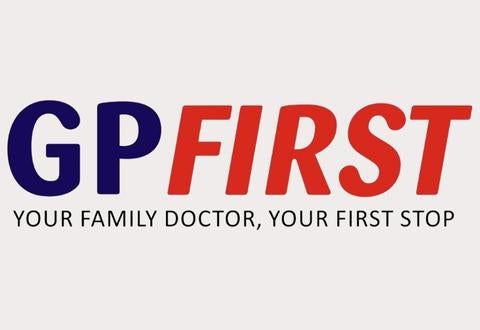What is - Arteriovenous Malformation (AVM)

What is arteriovenous malformation?
An arteriovenous malformation (AVM) is a congenital condition where blood vessels form abnormally, creating a direct connection between arteries and veins without the usual network of capillaries. This results in high-pressure arterial blood flowing straight into veins, which are not built to withstand such force. AVMs are most often found in the brain or spinal cord and appear as a tangled mass of vessels.
This abnormal flow can lead to serious complications. The most concerning is the risk of rupture and bleeding, which may cause a stroke or permanent neurological damage. AVMs can also result in seizures or progressive neurological issues such as weakness, numbness or speech problems, depending on their location.
What is the prevalence of arteriovenous malformations (AVMs)?
AVMs are relatively rare, with an estimated prevalence of approximately 15 per 100,000 individuals. The annual incidence is about one per 100,000 population. Due to their rarity and often asymptomatic nature, many AVMs remain undiagnosed until complications arise.
What are the types of arteriovenous malformation (AVM)?
Arteriovenous malformations (AVMs) can be classified based on their location and structure. These include:
- Brain AVM: The most common type, occurring within the brain. It may cause headaches, seizures or bleeding in the brain.
- Spinal AVM: Found in or around the spinal cord. It can lead to back pain, weakness or numbness in the limbs.
- Pulmonary AVM: Located in the lungs. It may result in shortness of breath or low blood oxygen levels.
- Peripheral AVM: Occurs in other parts of the body such as the arms, legs or organs. Symptoms vary depending on the location.
- Facial or cranial AVM: Found in the face or scalp. It may cause visible swelling, pain or bleeding.
Symptoms of Arteriovenous Malformation (AVM)
What are the symptoms of arteriovenous malformation (AVM)?
AVM does not always cause symptoms. Potential presenting symptoms may include:
- Bleeding: 50% of patients with AVMs will present with a hemorrhage. The risk of hemorrhage is estimated to be about 2-4% per year.
- Seizures: 25% of patients have this as their presenting symptom.
- Stroke-like symptoms: Due to pressure on the surrounding brain.
When should you see a doctor?
You should see a doctor if you have been diagnosed with a vascular abnormality or are undergoing evaluation for unexplained neurological symptoms.
Even if you do not experience obvious signs, early consultation is important if you are undergoing imaging for another reason and an AVM is detected. Timely assessment by a neurologist or neurosurgeon can help determine the risk of complications and guide appropriate monitoring or treatment.
What are the potential complications of arteriovenous malformation (AVM)?
AVMs can cause a range of complications, some of which may be life-threatening. These include:
- Haemorrhage: This occurs when the AVM ruptures, causing bleeding in the brain or spinal cord. It can result in stroke, permanent brain damage or death.
- Seizures: AVMs, particularly those in the brain, may trigger seizures and can sometimes be the first noticeable symptom.
- Neurological deficits: Depending on the location of the AVM, symptoms may include weakness, numbness, vision problems or difficulty with speech and coordination.
- Steal phenomenon: This refers to the diversion of blood away from surrounding healthy brain tissue, which can lead to localised ischaemia and impaired cognitive function.
- Hydrocephalus: In rare cases, bleeding or pressure from an AVM can block the flow of cerebrospinal fluid, leading to a dangerous buildup of fluid in the brain.
Arteriovenous Malformation (AVM) - How to prevent
How is arteriovenous malformation (AVM) prevented?
There is currently no known way to prevent arteriovenous malformation (AVM) as most cases are congenital, meaning they are present at birth.
However, the following measures may help reduce the risk of complications if diagnosed with AVM:
- Seek medical advice promptly if you experience unexplained neurological symptoms.
- Manage high blood pressure to reduce the risk of rupture.
- Follow your healthcare provider’s recommendations regarding imaging and treatment options.
Arteriovenous Malformation (AVM) - Causes and Risk Factors
What causes arteriovenous malformation (AVM)?
The exact cause of AVM is not fully understood. Most AVMs are believed to be congenital, meaning they develop during foetal growth and are present at birth. In rare cases, AVMs may form later in life, although the reasons for this are unclear.
AVMs occur when there is an abnormal connection between arteries and veins, bypassing the capillary system. This can lead to increased pressure in the veins and may result in rupture or bleeding. While AVMs are not usually inherited, individuals with certain genetic conditions that affect blood vessel development may have a higher risk.
What are the risk factors for arteriovenous malformation (AVM)?
The exact risk factors for arteriovenous malformation (AVM) are not well defined, but the following may increase the likelihood of developing an AVM:
- Family history: Although rare, individuals with a family history of vascular malformations or certain genetic conditions may have an increased risk.
- Genetic disorders: Conditions such as hereditary haemorrhagic telangiectasia (HHT) can be associated with AVMs in various parts of the body.
Diagnosis of Arteriovenous Malformation (AVM)
How is arteriovenous malformation (AVM) diagnosed?
Arteriovenous malformations are diagnosed through imaging studies, often prompted by symptoms or discovered incidentally.
- Initial imaging: AVMs are often first detected on computed tomography (CT) or magnetic resonance imaging (MRI) scans. These may be performed due to symptoms such as seizures, headaches or neurological changes, or they may reveal an AVM incidentally during unrelated investigations.
- Diagnosis after haemorrhage: In many cases, AVMs are identified following a haemorrhagic event. Emergency imaging helps confirm the cause of bleeding and may reveal an underlying vascular abnormality.
- Cerebral angiography: If an AVM is suspected or confirmed, a cerebral angiogram is typically performed. This involves injecting a contrast dye into the bloodstream to capture detailed images of the brain's blood vessels using X-rays.
- Purpose of angiography: This investigation provides critical information about the AVM’s size, location, structure and the associated feeding arteries and draining veins. It also identifies features such as aneurysms, which are important for determining the most appropriate treatment approach.
Treatment for Arteriovenous Malformation (AVM)
How is arteriovenous malformation (AVM) treated?
The management options for arteriovenous malformations include:
Conservative management and observation
This approach may be suitable for small AVMs that are not causing symptoms or are located in areas of the brain where treatment carries significant risk. Observation with surveillance scans may be advised. The goal is to minimise intervention while observing for signs of bleeding or progression.
Microsurgical resection
Microsurgical resection remains the most definitive treatment for brain AVMs, particularly for lesions that are small to moderate in size, superficially located, or situated in non-eloquent brain regions. When appropriately selected, surgical excision offers the advantage of immediate and complete nidus removal, thereby eliminating the risk of future hemorrhage.
Stereotactic radiosurgery
This non-invasive procedure uses highly focused radiation to damage the blood vessels within the AVM, causing them to close off over time. It is generally used for smaller AVMs that are difficult to access surgically. The full effects of treatment may take months or years to be seen and regular follow-up imaging is required.
Endovascular Embolisation
Endovascular embolisation is a minimally invasive technique used to reduce the size and flow of AVMs by delivering embolic agents directly into the nidus via a microcatheter. While it is rarely curative when used alone, embolisation plays a critical role as an adjunct to microsurgery or radiosurgery by targeting deep feeders or high-flow fistulous components, thereby reducing operative risk or facilitating subsequent treatment.
Factors under consideration when deciding on AVM treatment include:
- Age of the patient
- Current clinical condition of the patient
- Morphology and location of the AVM
- Risks of the procedure
FAQs on Arteriovenous Malformation (AVM)
Is an arteriovenous malformation a type of tumour?
No, an AVM is not a tumour. It is a vascular abnormality where there is an abnormal connection between arteries and veins, bypassing the normal capillary system. It does not involve cancerous or malignant cells.
What is the risk of an AVM bleeding?
The estimated risk of haemorrhage from an AVM is approximately 2-4% per year. The risk may be higher if the AVM has bled before or has specific features such as associated aneurysms.
Can lifestyle changes help manage an AVM?
While lifestyle changes cannot prevent or cure an AVM, managing blood pressure and following medical advice can help reduce the risk of complications. Regular check-ups and adherence to treatment plans are important for long-term care.
Contributed by
The information provided is not intended as medical advice. Terms of use. Information provided by SingHealth.
Condition Treated At
Department
NNI @CGH
Department
Vascular and Endovascular Surgery
Department
Neuroscience Clinic
Get to know our doctors at SingHealth Hospitals in Singapore.
Get to know our doctors at SingHealth Hospitals in Singapore. here.



















